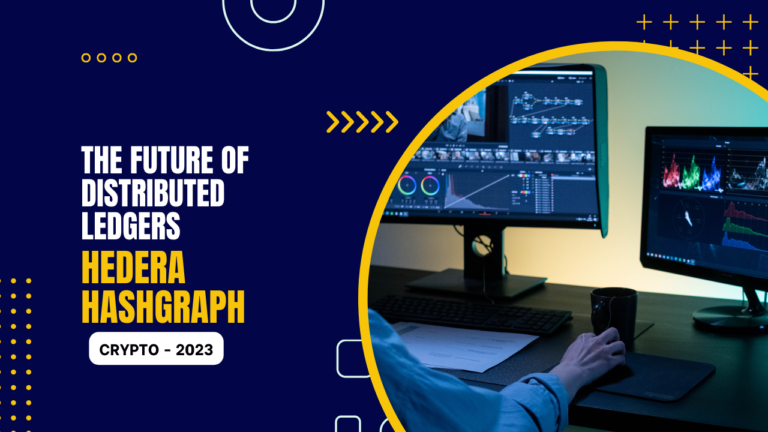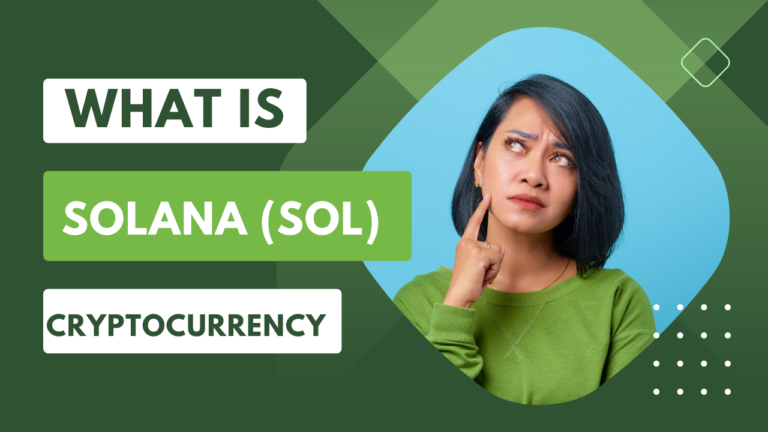Introduction
The world of cryptocurrency has witnessed a remarkable rise in popularity over the past decade. What initially started as a niche concept has now become a global phenomenon, revolutionizing the way we conduct business. This article explores five innovative business ideas that have been unleashed by the power of crypto, transforming industries and opening up new possibilities for entrepreneurs and investors alike.
The Emergence of Cryptocurrencies
Cryptocurrencies, such as Bitcoin and Ethereum, are digital or virtual currencies that utilize cryptography for security. They operate on decentralized networks called blockchains, which are essentially digital ledgers that record all transactions securely and transparently. The emergence of cryptocurrencies has challenged traditional financial systems and opened up avenues for innovative business ideas to thrive.
How Crypto is Transforming Business
The integration of cryptocurrencies and blockchain technology has had a profound impact on various aspects of business. From decentralized finance (DeFi) to non-fungible tokens (NFTs), the possibilities are endless. Let’s delve into each of these innovative business ideas in detail.
1. Decentralized Finance (DeFi)
DeFi, short for decentralized finance, is a financial system built on blockchain networks that aims to eliminate intermediaries and create an open and inclusive financial ecosystem. It offers various financial services, such as lending, trading, and investing, with the promise of greater accessibility and transparency.
1.1. DeFi Explained
DeFi operates through smart contracts, which are self-executing agreements that automatically execute transactions when predetermined conditions are met. These smart contracts eliminate the need for traditional intermediaries like banks, allowing individuals to directly interact with the DeFi protocols and earn passive income through different mechanisms.
1.2. Innovative Blockchain-based Lending Platforms
One of the key aspects of DeFi is blockchain-based lending platforms. These platforms enable individuals to lend and borrow cryptocurrencies without the involvement of a centralized authority. Through decentralized lending protocols, lenders can earn interest on their holdings, while borrowers can access funds quickly and easily.
1.3. Automated Market Makers (AMMs)
Another innovative component of DeFi is automated market makers (AMMs). AMMs are decentralized exchanges that utilize liquidity pools and algorithms to facilitate trading without the need for order books or centralized intermediaries. These platforms allow users to trade cryptocurrencies instantly and seamlessly, enhancing liquidity and efficiency in the market.
1.4. Yield Farming and Liquidity Mining
Yield farming and liquidity mining are incentivization mechanisms within DeFi that enable users to earn additional rewards by providing liquidity to decentralized exchanges or participating in governance protocols. This concept allows individuals to leverage their crypto holdings to generate passive income, further encouraging participation and liquidity in the ecosystem.
1.5. Challenges and Future of DeFi
While DeFi presents exciting opportunities, it also faces challenges such as scalability, security, and regulatory concerns. However, as the technology evolves and matures, we can expect DeFi to continue transforming the financial landscape, making traditional financial systems more accessible and inclusive.
2. Non-Fungible Tokens (NFTs)
Non-fungible tokens, or NFTs, have taken the digital world by storm, revolutionizing the concept of ownership and authenticity. NFTs are unique digital assets that represent ownership or proof of authenticity of a specific item, whether it’s artwork, collectibles, or virtual properties.
2.1. Understanding NFTs
Unlike cryptocurrencies, which are fungible and can be exchanged on a one-to-one basis, NFTs are indivisible and unique. They are built on blockchain technology, typically on Ethereum, allowing for transparent ownership records, provenance verification, and royalty collection.
2.2. NFTs in the Art and Collectibles Market
NFTs have brought a paradigm shift to the art and collectibles market. Artists and creators can now tokenize their work as NFTs, retaining ownership rights and earning royalties whenever their art is sold or transferred. This technology has empowered artists and revolutionized the way art is bought, sold, and owned.
2.3. NFTs in Gaming and Virtual Worlds
NFTs have found significant utility in the gaming industry and virtual worlds. Gamers can now own unique in-game assets as NFTs, trade them on decentralized marketplaces, and even earn a livelihood by playing games and selling virtual items. This innovation has created a new dimension of value and ownership within the gaming ecosystem.
2.4. NFTs and Intellectual Property
NFTs also have implications for intellectual property. Artists and content creators can protect their digital creations through NFTs, ensuring proof of ownership and preventing unauthorized duplication or distribution. This technology fosters a more secure and transparent environment for creatives to showcase and monetize their work.
2.5. Criticisms and Potential of NFTs
While NFTs hold immense potential, they face criticisms regarding environmental concerns, market volatility, and fraud. However, these challenges can be addressed through responsible and sustainable practices, ensuring the long-term viability and acceptance of NFTs as a legitimate asset class.
3. Tokenization of Real-World Assets
Tokenization allows the representation of real-world assets, such as real estate or commodities, as digital tokens on a blockchain. This innovative concept brings liquidity, fractional ownership, and new investment opportunities to traditionally illiquid and exclusive markets.
3.1. Tokenization Explained
Tokenization involves converting the ownership rights of an asset into a digital token on a blockchain. Each token represents a fraction of the asset’s value, making it divisible and tradable. By creating tokens, real-world assets become more accessible to a broader range of investors, unlocking liquidity and increasing market efficiency.
3.2. Real Estate Tokenization
Real estate tokenization has the potential to democratize property investment. By tokenizing properties, investors can buy and trade fractions of real estate assets, reducing barriers to entry and allowing for fractional ownership. This innovation broadens the investor base and provides new avenues for diversification within the real estate market.
3.3. Tokenizing Commodities
Tokenizing commodities, such as gold or oil, offers benefits like ease of trade, global accessibility, and enhanced liquidity. Investors can hold digital tokens that represent their ownership of physical commodities, allowing for seamless trading and hedging opportunities. Tokenization of commodities creates new avenues for investment, particularly for retail investors.
3.4. Benefits and Challenges of Tokenizing Real-World Assets
Tokenizing real-world assets offers benefits such as increased liquidity, fractional ownership, and broader market participation. However, challenges related to regulations, custody, and investor protection need to be addressed for widespread adoption. As the technology and regulatory frameworks develop, tokenization has the potential to reshape the investment landscape.
4. Decentralized Autonomous Organizations (DAOs)
Decentralized Autonomous Organizations, known as DAOs, are self-governing organizations that operate on blockchain networks. These entities are governed by code and democratic decision-making processes rather than traditional hierarchical structures.
4.1. What are DAOs?
DAOs are organizations with no central authority, where decisions are made collectively through voting or consensus mechanisms. They allow participants to have a stake in decision-making and influence the direction of the organization. DAOs are typically powered by smart contracts, ensuring transparency and immutability.
4.2. Governance and Decision-Making in DAOs
Governance in DAOs happens through voting mechanisms, allowing token holders to participate in decision-making. Proposals and decisions are executed based on the consensus of token holders, who can vote on various matters, such as fund allocations, project developments, or protocol upgrades. DAOs empower individuals to be part of decision-making processes, creating more inclusive and transparent organizations.
4.3. DAOs in Fundraising and Venture Capital
DAOs have disrupted traditional fundraising and venture capital models, enabling decentralized crowdfunding and investment opportunities. Through token sales or Initial Coin Offerings (ICOs), individuals can contribute to projects they believe in, becoming active stakeholders in the success of the venture.
4.4. DAOs and Decentralized Governance Models
DAOs represent a shift towards decentralized governance models, where decision-making power is distributed among participants rather than concentrated in a few entities or individuals. This allows for greater transparency, accountability, and community involvement, which are key principles of blockchain technology.
4.5. Regulatory Challenges for DAOs
While DAOs offer exciting possibilities, they also face regulatory challenges, especially in terms of legal accountability, investor protection, and ownership rights. Regulatory frameworks need to evolve to accommodate these new organizational structures while ensuring consumer trust and market stability.
5. Blockchain-Based Supply Chain Management
Blockchain technology has the potential to revolutionize supply chain management by providing enhanced traceability, transparency, and security. It offers solutions to common challenges faced by traditional supply chains, such as counterfeiting, lack of transparency, and inefficiencies.
5.1. Blockchain’s Impact on Supply Chains
Blockchain brings an immutable and transparent ledger to supply chains, allowing stakeholders to trace every step of a product’s journey from production to consumption. By integrating blockchain technology, supply chain management becomes more efficient, trustworthy, and resistant to fraud.
5.2. Enhanced Traceability and Transparency
By recording each transaction and movement on the blockchain, supply chain participants can easily track and verify the origin, quality, and authenticity of goods. This enhanced traceability helps combat counterfeit products, ensures adherence to sustainability standards, and builds trust among consumers.
5.3. Smart Contracts in Supply Chain Management
Smart contracts automate and enforce contractual agreements within supply chains. They facilitate efficient and secure transactions, reducing the need for intermediaries and paperwork. Smart contracts can ensure timely payments, manage inventory, and streamline logistics, leading to cost savings and increased efficiency.
5.4. Eliminating Counterfeit Goods
Counterfeit goods pose a significant challenge for supply chains. With blockchain technology, every product can be assigned a unique digital identity, making it virtually impossible to counterfeit or tamper with. Consumers can verify the authenticity of products, ensuring they receive genuine goods.
5.5. Future Adoption Challenges
Despite its potential, blockchain-based supply chain solutions face challenges in terms of scalability, interoperability, and adoption. Widespread collaboration, industry-wide standards, and education are necessary for successful integration and realization of blockchain’s full potential in supply chain management.
Conclusion
The ongoing revolution of crypto in business has unleashed a wave of innovative ideas that challenge traditional models and reshape industries. From decentralized finance and non-fungible tokens to tokenized assets, DAOs, and blockchain-based supply chain management, the potential of crypto is vast and ever-expanding. By embracing these ideas, businesses can tap into new opportunities, increase efficiency, and create more inclusive and transparent ecosystems.
Frequently Asked Questions (FAQs)
What is a cryptocurrency?
A cryptocurrency is a digital or virtual currency that utilizes cryptography for security and operates on decentralized networks called blockchains.
Why is blockchain technology important?
Blockchain technology ensures transparency, security, and immutability by providing a decentralized and tamper-proof ledger, making it vital for various industries and applications.
How do DeFi platforms generate yield?
DeFi platforms generate yield through mechanisms such as lending, liquidity provision, yield farming, and liquidity mining, which incentivize users to contribute their assets and participate in the ecosystem.
What makes an NFT valuable?
The value of an NFT is derived from its uniqueness, provable ownership, and scarcity. The market’s perception of the underlying asset’s value also plays a significant role.
Can any asset be tokenized?
In theory, most assets can be tokenized, ranging from real estate and commodities to intellectual property and even personal items. However, regulatory and technical considerations need to be addressed for each specific asset class.
How do DAOs make decisions collectively?
DAOs make decisions collectively through voting or consensus mechanisms, where stakeholders can vote on proposals and participate in the governance processes of the organization.
How does blockchain ensure transparency in supply chains?
Blockchain provides transparent and immutable records of transactions and movements within supply chains, enabling stakeholders to trace and verify the origin, authenticity, and journey of products.
Are there any security risks associated with crypto-based businesses?
Crypto-based businesses face security risks such as hacking, phishing, and fraud. However, advancements in security protocols and practices aim to mitigate these risks and enhance the overall security of crypto ecosystems.
What are the legal implications of using crypto in business?
The legal implications of using crypto in business vary between jurisdictions and depend on factors such as regulatory frameworks, tax regulations, and compliance requirements. Businesses should seek legal advice to navigate these complexities.
What does the future hold for the integration of crypto in traditional industries?
The integration of crypto in traditional industries is expected to continue growing as businesses recognize the advantages of blockchain technology, efficiency gains, and the new opportunities it presents. As regulations evolve and awareness increases, industries will become more receptive to adopting crypto-based solutions.











+ There are no comments
Add yours